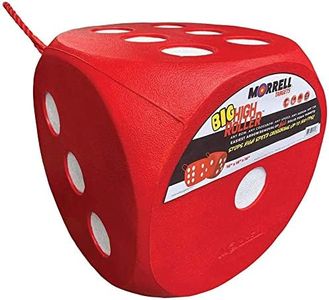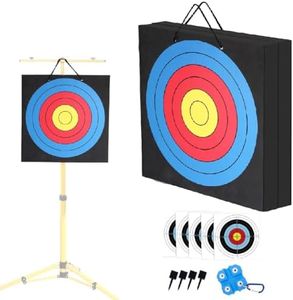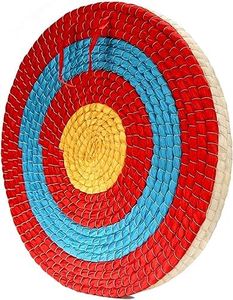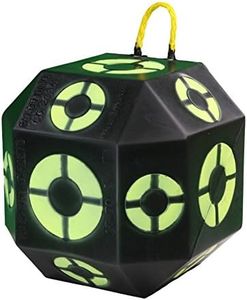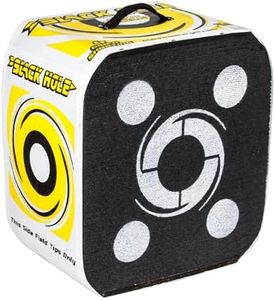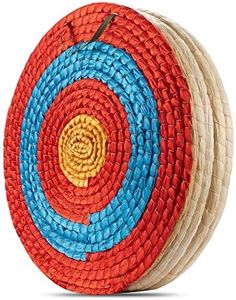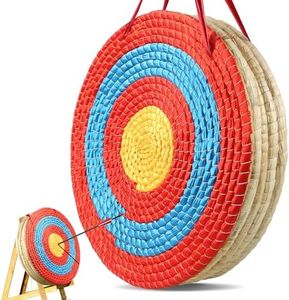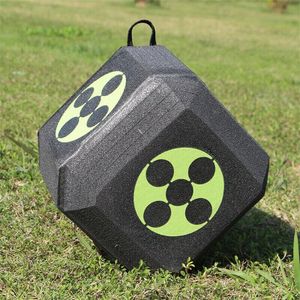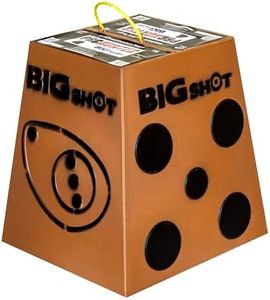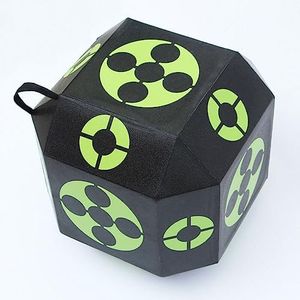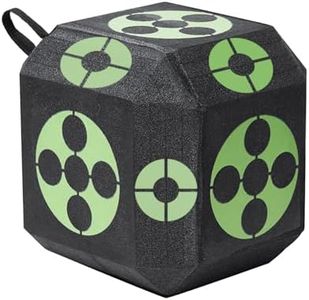We Use CookiesWe use cookies to enhance the security, performance,
functionality and for analytical and promotional activities. By continuing to browse this site you
are agreeing to our privacy policy
10 Best Archery Targets
From leading brands and best sellers available on the web.Buying Guide for the Best Archery Targets
Choosing the right archery target is crucial for both beginners and seasoned archers. The right target will not only withstand repeated shots but also help improve accuracy, maintain arrow condition, and ensure safety. When buying an archery target, it’s important to consider your shooting style, bow type, and how often you’ll be practicing. Understanding the key features will help you make an informed choice that matches your specific archery needs.Target MaterialThe material of an archery target determines its durability, stopping power, and compatibility with various arrow tips. Common materials include foam, layered foam, bag (filled with synthetic fiber), and traditional straw. Foam targets are great for multiple arrow types and are long-lasting, while bag targets are best for field points and offer easy arrow removal. Straw is traditional and suitable for light bows. To choose, consider whether you'll use broadheads or field tips, your bow's draw weight, and how often you'll shoot; heavy users or those shooting powerful bows should opt for high-density foam or layered materials.
Target SizeTarget size refers to the overall diameter or face area of the target. Larger targets are easier to hit and provide more area to practice varying shot placements, which is ideal for beginners or those practicing at longer distances. Smaller targets present a greater challenge and help experienced archers hone their precision. To decide on size, factor in your skill level and the usual distance you'll shoot from; beginners or long-range shooters benefit from larger targets, while skilled archers or short-range shooters can opt for smaller ones.
Target TypeArchery targets mainly come as bag targets, block (cube) targets, 3D animal replicas, or traditional round targets. Bag targets are portable and great for volume shooting with field tips. Block targets use layered foam, suitable for both field points and broadheads. 3D targets simulate real-life hunting practice and are often shaped like animals. Traditional round targets are used for formal archery practice. Your choice depends on your practice goals: field point practice and convenience call for bag or block targets, while hunters benefit from realistic 3D targets.
Arrow CompatibilityNot all targets work with all arrow types or points. Some targets are designed only for field points, others can handle broadheads, and some can take both. Field tip-only targets are standard, but if you plan to practice with hunting tips (broadheads), make sure your target is rated for them. Before buying, check your arrows and regularly used tips—if you use broadheads or heavier arrows, you need a more durable target that explicitly states compatibility.
Portability and Weather ResistanceIf you'll move your target between locations or store it outdoors, weight and weather resistance matter. Lightweight targets are easy to move but may shift when hit by powerful arrows, while heavier models stay in place but are harder to relocate. Weather-resistant materials prevent damage from rain or sun exposure. Choose a portable target if you’ll set up at various spots, and look for weatherproofing features if the target will be left outside often.
Self-healing PropertiesSelf-healing targets close up after arrows are removed, prolonging their usable life. This feature is common in higher-quality foam or layered block targets. A self-healing target lasts longer and stays in good shape despite frequent use. For heavy or regular shooters, or for those sharing the target, this feature is a wise investment to reduce the need for frequent replacements.
